#intel a770
Explore tagged Tumblr posts
Text
Ya boi got an external GPU. We gaming in (relative) luxury ✨️
Did experience some issues, but getting min 24 fps and even with reaching max graphics is an astronomical improvement (tested games Temtem & Outer Wilds [feel free to ask bout the latter or go to subreddit and get a NO Spoiler review])
Feel free to ask questions. Especially if relating to my setup :)
Laptop: Thinkpad T14 Gen 3 (with the Intel i5 processor) (dual booting Windows & Fedora [primary OS used for everything including gaming])
Enclosure: Razer Core X (not the Chroma, card has enough lights for me :p) (connected through thunderbolt, needs specific specs cable tho, the included one works but is short)
Graphics Card: Predator BiFrost Intel Arc A770
#ask me anything#eGPU#gpu#intel#linux games#linux#fedora#razer#razer core x#intel a770#thinkpad#linux gaming#laptop gaming#external GPU#Predator BiFrost#on a budget
3 notes
·
View notes
Text

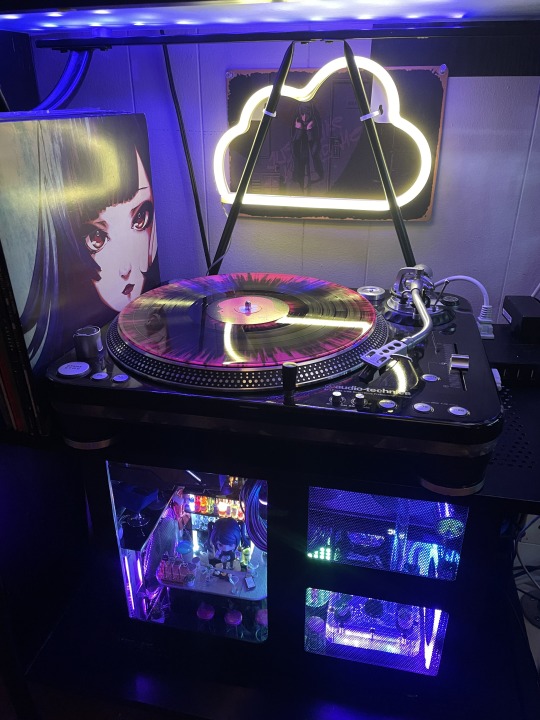


I built a miniature Va11 Hall-A Bar inside of my PC!!
Va11 Hall-A PC Parts & Build list
PC:
CPU : Intel I9 14900k
GPU: Intel Arc A770 16gb
Ram: Corsair Dominator 64gb 5600
Mobo: Maxsun Terminator Z790 D5 wifi
Hard drives M.2: Samsung 990 pro 2tb, Samsung 970 evo plus 1tb, CT 1tb, Adata 500gb
PSU: ROG Thor 850 P2
Cables: Cablemod.com custom shortened and sleeved
Water loop distro : EKWB FLT 120 reservoir + D5 pump
Water loop cpu block: ThermalTake Pacific Mx2 Ultra
Water loop radiators: Alphacool HPE 20 x 2
Water loop hardware: 15 Alphacool, 3 EKWB, 2 Alphacool soft, 2 granzon
Water loop tubes: EKWB Acrylic tube 14mm, Alphacool 13/10 soft
Air Cooling : ThermalTake Toughfan 120mm x 3 + Controller
Air Cooling : Noctua 40mm pwm server fan x 2 (non visible)
Additional RGB Control : Coolermaster controller
Case:
Lian Li PC V600, left side mount, released in 2006, I acquired it in 2015 from PC Recycle in sodo Seattle.
I had to track down a new foot, one had been missing since I acquired the case (ebay)
Mods:These are the case mods I did personally
Cut a hole for the cpu mounts in the Motherboard mount plate as this case was designed for older hardware
Cut two 120mm blowholes and added aluminum covers (Dremel)
Cut Front and rear windows into side panels (Dremel Max)
Moved PSU from vertical placement in the lower right side of the case in front of the CPU to horizontal placement in the top left in old drive bays.
The PSU bracket had to be cut to show the OLED on the side.
Modded the side panel rail slide to accommodate the PSU, I used the original aluminum stand the psu was on, cut in half and epoxied with JB weld.
Changed and moved Power/ Reset switch to the back of the case, shortened and spliced the cable
I cut and bent my own 14mm acrylic tubes (hobby miter, heat gun).
Cut and made two way mirror for the front panel
Plastic "truss" is both functional and aesthetic. It came from a Gunpla accessory kit and has two cables passing through it and it acts as the GPU support. I could only get red and had to paint it.
Notice that some logos are missing/ covered, I dislike having a case as an advertisement. The Rog eye on the PSU is mostly covered but iykyk, most of the word "Intel" on the ARC GPU, Two of the Thermaltake logos on the fan edges, the Paint on the Thermaltake Mx2 Ultra and Maxsun terminator heatsink. (I will eventually cover the visible SSD with a heat sink, cover the fan info on the rear and work a cover for the word "dominator"). the one logo explicitly unchanged is the LianLi case badge, if I think of a perfect replacement, maybe then.
Mod I did not do:
I did NOT shorten and sleeve my own cables, I used cable-mod.com. I am not confident in my ability to do this.
BAR:
"Bar Tiny" Re-ment sets from Japan, 17 sets involved.
I customized the color of the bar and chairs and shortened one table for the mezzanine. The whole bar, minus barback- is on a removable 7 inch piece of black acrylic for cleaning.
Jill Stingray Nendoroid
Jils Cat, it sleeps on the GPU
Jill Stool: Jill is glued to a cute doll stool to see over the bar
Jill Accessories non-Nendoroid: cellphone, purse, coat (ebay)
Dorothy Haze Nendoroid
will be added on release.
Bar Back:I made this myself
Black acrylic sheet, and frosted acrylic rods.
Doll Light power kit: 8 Led lights, 4 incandescent lights
USB Doll light power strip
Other Bar Accessories:
Overhead Hanging farmhouse light
trash, mop, broom, pan, mop bucket,
2 blue fuzzy chairs
Miniature plants
Miniature Microphone
Mini bottle Dom Perignon, an xmas gift from my friend nemo, it's
on the top shelf
Problems and changes:
1. ARGB, pretty pretty pain in the ass. 4 pieces of software........
2. The water loop was changed extensively as hardware came in and space limitations were discovered. The biggest change is that I originally planned to have one radiator on the front of the case, the tubes running over Jills head and to light the tubes as lighting for the bar, to do this the fan would have been in the case proper pushing the whole bar to far into the mobo, it didn't work, so the loop was moved to the top of the case and caused me to have one complex bent tube
Second, I had planned the loop to use one sideport on the distro, but space limitation moved both ports to the top causing the complex fittings setup in that corner.
3. The MOBO, sigh. This has been clearly the most challenging choice I made in this build, I really wanted it to work perfectly too, but I rolled those dice because: Aesthetic+function, the board I wanted (https://en.colorful.cn/en/home/product?mid=84&id=400d19bc-5655-49e1-b391-df00b60935ef) was to great a risk for the cost. This was a silver medal.
I generally dislike the design options I had in the Z790 series of the big board makers (I HATE big logos), especially the full ATX, there was one M that interested me, I should have picked it . This board has potential, but the BIOS is underdeveloped and compatibility has been problematic, I had to do a tricky outdated style BIOS update right from the box, and have had to reset the cmos a couple times. It skips BIOS on general boot and though stable, it will have to be addressed eventually, it doesn't have a proper sleep because of some issue between uefi & legacy. It may end up replaced, which will require a full build teardown.
the Turbo fan built into the board doesn't seem to function
Alos, the two argb connections on the mobo dont work, or I can't get them to recognize anything, necessitating the Coolermaster controller for the PSU and Distro. it is shoved behind the distro along with a Noctua 40mm
#va 11 hall a#va11ha11a#computer#pc#pcgamimg#sukeban#sukeban games#watercolor#watercooled#custompc#pc mods#jill stingray#fanart#cyberpunk art#futuristic#cyberpunk
274 notes
·
View notes
Text
Dominate the Battlefield: Intel Battlemage GPUs Revealed

Intel Arc GPU
After releasing its first-generation Arc Alchemist GPUs in 2022, Intel now seems to be on a two-year cadence, as seen by the appearance of the Battlemage in a shipping manifest. This suggests that Battlemage GPUs are being supplied to Intel’s partners for testing, as it’s the first time they’ve seen any proof of them existing in the real world. Intel is probably getting ready for a launch later this year given the timing of this.
Two Battlemage GPUs are being shipped by Intel to its partners, per a recently discovered shipment manifest that was published on X. The GPUs’ designations, G10 and G21, suggest Intel is taking a similar approach as Alchemist, offering one SKU that is more or less high-end for “mainstream” gamers and one that is less expensive.
Intel Arc Graphics Cards
As you may remember, Intel had previously announced plans to launch four GPUs in the Alchemist family:
Intel Arc A380
The A380, A580, A750, and A770. However, only the latter two were officially announced. They anticipate that the A750 and A770, which Intel most likely delivers at launch for midrange gamers, will be replaced by the G10.
They’ve never heard of cards being “in the wild,” but two Battlemage GPUs have shown up in the Si Soft benchmark database before. The fact that both of those cards have 12GB of VRAM stood out as particularly noteworthy. This suggests that Intel increased their base-level allowance from 8GB, which is a wise decision in 2024. As stated by Intel’s CEO earlier this year, Battlemage was “in the labs” in January.
Intel Arc A770
A previously released roadmap from Intel indicates that the G10 is a 150W component and the G21 is 225W. It is anticipated that Intel will reveal notable improvements in Battlemage’s AI capabilities, greater upscaling performance, and ray tracing performance. As 225W GPUs were the previous A750 and A770, it seems Battlemage will follow the script when it comes to its efficiency goals. The business has previously declared that it wishes to aim for this “sweet spot” in terms of power consumption, wherein one PCIe power cable is needed rather than two (or three).
While the industry as a whole is anxious to see how competitive Intel will be with its second bite at the apple, gamers aren’t exactly waiting impatiently for Intel to introduce its GPUs like they do with Nvidia or AMD’s next-gen. Even if the company’s Alchemist GPUs were hard to suggest when they first came out, significant performance advancements have been made possible by the company’s drivers.
The Intel Battlemage G10 and G21 next-generation discrete GPUs, which have been observed in shipment manifests, are anticipated to tackle entry into the mid-range market. They already know from the horse’s mouth that Intel is working on its next generation of discrete graphics processors, which it has revealed are being code-named Battlemage. The company is developing at least two graphics processing units, according to shipping excerpts.
Intel Battlemage GPUs
The shipping manifest fragments reveal that Intel is working on several GPUs specifically for the Battlemage G10 and G21 versions. The newest versions in Intel’s graphics processor lineup include the ACM-G11, an entry-level graphics processor, and the ACM-G10, a midrange market positioning and higher-end silicon graphics processor. As a result, the names Battlemage-G10 and Battlemage-G21, which are aimed at entry-level PCs and bigger chips, respectively, match the present names for Intel’s Arc graphics processors. Both stand a strong chance of making their list of the best graphics cards if they deliver acceptable levels of performance.
The Battlemage-G10 and Battlemage-G21 are being shipped for research and development, as stated in the shipping manifest (which makes sense considering these devices’ current status). The G21 GPU is currently in the pre-qualification (pre-QS) stage of semiconductor development; the G10’s current status is unknown.
Pre-qualification silicon is used to assess a chip’s performance, reliability, and functionality. Pre-QS silicon is typically not suitable for mass production. However, if the silicon device is functional and meets the necessary performance, power, and yield requirements, mass production of the device could be feasible. For example, AMD’s Navi 31 GPU, if it meets the developer’s objectives, is mass-produced in its A0 silicon phase.
They rarely get to cover Intel’s developments with its next-generation graphics cards, but they frequently cover Nvidia’s, as they did recently with the GeForce RTX 50-series graphics processors, which should appear on their list of the best graphics cards based on industry leaks.
This generation, Nvidia seems to be leading the laptop discrete GPU market, but Battlemage, with Intel’s ties to OEMs and PC manufacturers, might give the green team some serious competition in the next round. According to the cargo manifest, there will be intense competition among AMD’s RDNA 4, Intel’s Battlemage, and Nvidia’s Blackwell in the forthcoming desktop discrete GPU market.
Qualities:
Targeting Entry-Level and Mid-Range: The ACM-G11 and ACM-G10, the successors to the existing Intel Arc Alchemist series, are probably meant for gamers on a tight budget or seeking good performance in games that aren’t AAA.
Better Architecture: Compared to the Xe-HPG architecture found in Intel’s existing Arc GPUs, readers can anticipate an upgrade in this next-generation design. Better performance per watt and even new features could result from this.
Emphasis on Power Efficiency: These GPUs may place equal emphasis on efficiency and performance because power consumption is a significant element in laptops and tiny form factor PCs.
Potential specifications (derived from the existing Intel Arc lineup and leaks):
Production Process: TSMC 6nm (or, if research continues, a more sophisticated node) Unknown is the core configuration. Possibly less cores than Battlemage models at higher levels (should any exist).
Memory: GDDR6 is most likely used, yet its bandwidth and capacity are unclear. Power Consumption: Designed to use less power than GPUs with higher specifications.
FAQS
What are the Battlemage G10 and G21 GPUs?
Intel is developing the Battlemage G10 and G21, next-generation GPUs that should provide notable gains in capabilities and performance over their predecessors.
What markets or segments are these GPUs targeting?
Targeting a wide range of industries, including professional graphics, gaming, and data centres, the Battlemage G10 and G21 GPUs are expected to meet the demands of both consumers and businesses.
Read more on Govindhtech.com
#Intel#IntelArc#intelarcgpu#govindhtech#INTELARCA380#intelarca770#battlemagegpu#G10#G21#news#technologynews#technology#technologytrends
2 notes
·
View notes
Text
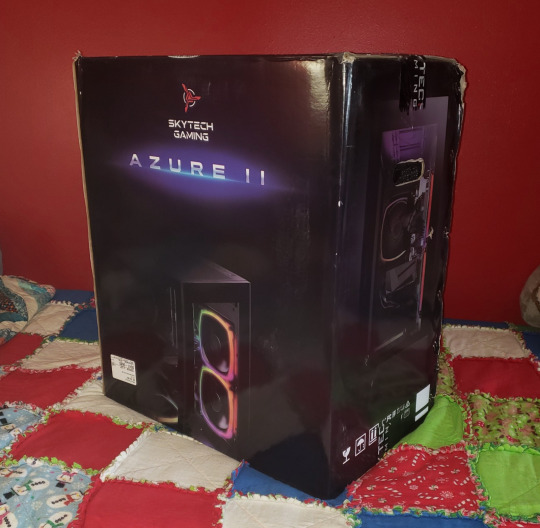

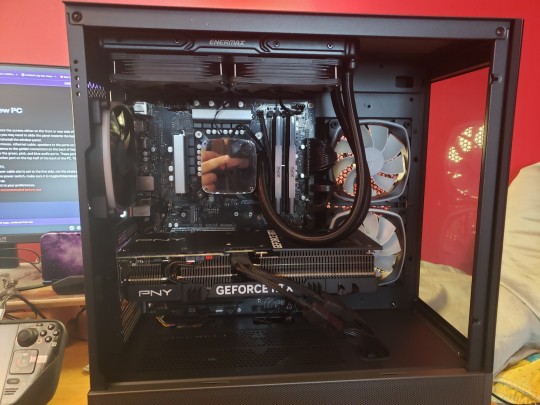
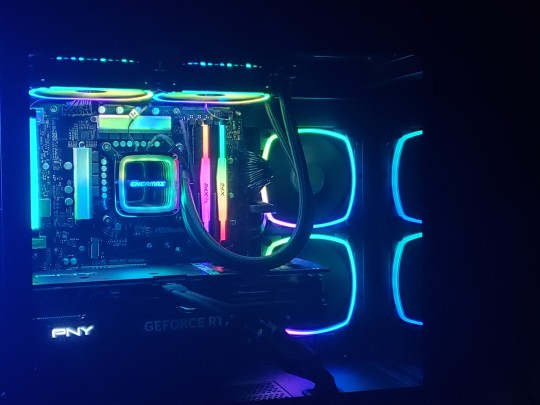
So here's the new toy that's been distracting me the last couple days. My decade+ old oversized ASUS gaming laptop finally pooped out several months ago, leaving me daily driving my Steam Deck of all things as my main home computer. And don't get me wrong, the Deck has performed remarkably well in that regard, but I've been meaning to get something a bit fancier for a while. Something that could handle 1440p gameplay at a decent framerate while streaming or recording, can manage image and video editing well, and in particular can run some VR games. I've been interested in VR gaming ever since Lobac posted about some of that a while back, especially with the Meta Quest 2 being a solid headset at a really aggressive cost. With the Zuck giving up on the metaverse, the Quest is likely never going to be cheaper than it is now.
I'd waffled for a while about building a PC, but in the end I psyched myself out and decided to go with a pre-built instead. Yes, that means willfully overpaying for the end product by a few hundred bucks to pay someone else to do the assembly and initial set up for me, but in exchange I only had to research one product instead of half a dozen separate components, plus there's a single warranty where if anything doesn't work it's somebody else's problem to fix it, and I'd only have to deal with a delay.
After watching and reading a bunch of reviews, Skytech seemed to be a decent choice for system integrator, with solid to positive reviews for various prebuilt models they offer, including Gamer's Nexus who tend to be pretty harsh on pre-builts. But it was this review from JustIN Tech that sold me on this Azure 2 model. "Performance equivalent to last gens best, but at half the price" is the exact tag line I was looking for, and after a recent price discount it was just within my $2k range.
In retrospect though, I should have done some more research on the specific components. I'm quite happy with the intel 13600 cpu, and while the included cooling setup is overkill for that chip, that just means I've got some free thermal space to overclock or upgrade in the future. Plus, it's pretty, and I'm shallow. On the other hand it turns out the nvidia 4070ti is not well thought of - generally considered badly overpriced, plus has the extra negetive association of being just a rebranding of the failed '4080 12gb' that was so roundly panned that its release had to be canned altogether. And the PNY model that came bundled in my unit isn't even as nice as the Gigabyte one in the JustIN Tech review. One of the reasons why Gamer's Nexus is the better channel for these sorts of reviews is that they do secret shopper and get the same stuff regular folks get, where as brands know what they're sending to channels like JustIN Tech and can take pains to make the best possible impression by including better components and taking extra care in assembly and packaging.
So what should I have purchased instead? I don't know. Maybe the 'blue' model of the same Azure 2 line, which is three hundred dollars cheaper to swap out the 4070ti for an intel Arc a770, which would probably have been more than enough for my intended use cases. Heck, with 4 extra gb of vram it might have even been better than the 4070ti for me in the long term, and if not then I could use the money saved towards swapping out to a better AMD card next gen. But the blue model comes in a blue version of the case, which wouldn't have made the swirly rainbow rbgs pop as much.
Anyway, while I might have made a different choice if I had done more research, that doesn't mean I'm at all unhappy with what I got! The Azure 2 arrived promptly. The build quality of the system is very nice. No damage, no loose or cross-threaded screws. Everything worked right out of the box when plugged in - including all the various external ports. Skytech certainly did a good job putting it all together. While the 4070ti might not be the most reasonably priced card for its performance level, now that it's here and paid for regardless, it seems like it should be able to do everything I want it to, at least for now. And if I end up replacing the gpu sooner then I would have liked, eh, we live and learn.
And while it doesn't matter at all compared to cost and performance, the swirly rainbow rgb lighting makes me feel like a Real Gamer (tm).
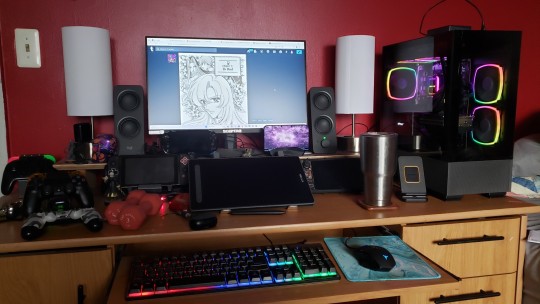
Desk is getting a bit cluttered tho.
As for performance, It's quiet and runs cool while playing my current games at top settings - though my particular game selection (mostly just Elden Ring on max settings with Ray Tracing), and my 1080p, 75hz monitor aren't exactly putting it through its paces yet. A new monitor is one of several upgrades & accessories I plan to get to go with this thing in coming months. New monitor, VR headset, an extra ssd on which to install linux - I figure I'll keep the windows install on the side, on the off chance there are games or utilities I can't get running in Linux down the line.
But anyway yeah, that's what I've been so busy with lately, delaying liveblog posts.
#gaming pc#skytech#other guys my age go out and buy like an expensive car or something#This is my mid life crisis gaming rig#I will use it to emulate nes games
6 notes
·
View notes
Text
Intel vs. AMD: A Batalha Total pelo Futuro do PC Gamer
Por Vinicius Torres Oliveira
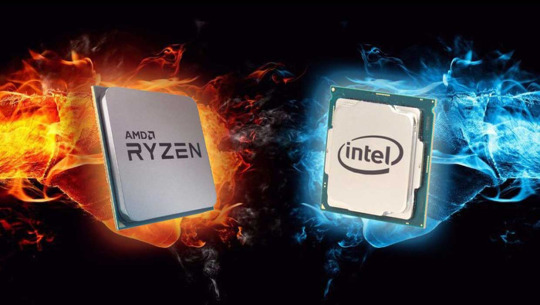
Processadores, Placas de Vídeo e a nova fronteira da Inteligência Artificial. Analisamos quem está liderando a guerra pela supremacia em cada campo.
Por anos, a rivalidade entre Intel e AMD foi a novela do mundo do hardware, focada quase que exclusivamente nos processadores. Era o Time Azul contra o Time Vermelho em uma corrida por núcleos, frequências e o título de "melhor CPU para jogos". Mas em 2025, essa disputa evoluiu. Ela se tornou uma guerra total, travada em três frentes cruciais: Processadores (CPUs), Placas de Vídeo (GPUs) e a revolucionária arena da Inteligência Artificial (IA).
Com a Intel entrando de vez no mercado de GPUs dedicadas e a IA se tornando o tempero secreto para mais FPS e melhores gráficos, a pergunta "qual a melhor?" ficou muito mais complexa. Vamos desdobrar essa batalha e ver quem está com a vantagem em cada segmento.
Frente 1: A Guerra Clássica dos Processadores
Aqui, a batalha é sangrenta e cheia de reviravoltas. Depois de anos na liderança confortável, a Intel viu a AMD ressurgir das cinzas com a arquitetura Zen, que culminou nos poderosos processadores Ryzen.
A Situação Atual:
AMD (Team Red): Com suas séries Ryzen 8000 e 9000, a AMD continua a impressionar. Sua força bruta em multitarefa, graças a um maior número de núcleos e threads em várias faixas de preço, a tornou a queridinha dos criadores de conteúdo e streamers. Em jogos, modelos com a tecnologia 3D V-Cache (como o Ryzen 7 7800X3D) são considerados por muitos os reis do custo-benefício para gaming puro. A AMD tem ganhado consistentemente fatia de mercado, provando que sua aposta em mais núcleos e eficiência valeu a pena.
Intel (Team Blue): A Intel n��o está parada. Com seus processadores Core de 14ª Geração e os novos Core Ultra para notebooks, a empresa aposta em uma arquitetura híbrida inteligente, combinando P-Cores (núcleos de performance) e E-Cores (núcleos de eficiência). Isso garante que tarefas de fundo não atrapalhem seu jogo. A Intel ainda frequentemente detém a coroa de performance em single-core, o que pode se traduzir em alguns FPS a mais em certos títulos.
O Veredito da CPU: A escolha é mais difícil do que nunca.
Vá de AMD se: Você busca o melhor desempenho em múltiplas tarefas, joga e faz streaming ao mesmo tempo, ou quer o máximo de performance em jogos por um preço competitivo com os chips X3D.
Vá de Intel se: Você quer extrair o máximo de FPS em jogos que dependem de alta frequência, e usa seu PC para tarefas que se beneficiam da forte performance single-core.
Frente 2: A Invasão Azul no Território das GPUs
Por décadas, o mercado de placas de vídeo foi um duelo entre AMD (Radeon) e NVIDIA. A Intel, com seus gráficos integrados, mal participava da conversa de "PC Gamer". Isso mudou com a chegada das Intel Arc.
A Situação Atual:
AMD (Radeon): A AMD continua sendo uma forte concorrente, especialmente no quesito custo-benefício. Suas placas da série Radeon RX 7000 (como a RX 7800 XT) oferecem uma performance fantástica em rasterização (jogos tradicionais sem Ray Tracing) por preços que desafiam a concorrência. No entanto, relatórios do início de 2025 mostram que sua fatia no mercado de GPUs dedicadas encolheu, espremida entre a dominância da NVIDIA e a novidade da Intel.
Intel (Arc): A jornada da Intel com as GPUs Arc foi uma montanha-russa. O lançamento inicial foi marcado por drivers problemáticos, mas a empresa investiu pesado e, hoje, a situação é outra. As placas Arc Alchemist, como a A770, oferecem um desempenho surpreendentemente bom para seu preço, especialmente em jogos mais modernos com DirectX 12. Com a promessa da próxima geração, codinome "Battlemage", a Intel não está para brincadeira e quer se estabelecer como a terceira grande força.
O Veredito da GPU (Intel vs AMD):
Vá de AMD se: Sua prioridade é o máximo de FPS por real gasto em jogos tradicionais. A AMD oferece placas maduras e poderosas para quem joga em 1080p e 1440p.
Vá de Intel se: Você é um "early adopter", gosta de ver uma tecnologia evoluir e busca uma ótima relação de performance por preço em títulos recentes. As Arc são uma aposta interessante, com grande potencial de melhoria via software.
Frente 3: A Corrida Armamentista da Inteligência Artificial
A IA é o novo campo de batalha, e talvez o mais importante para o futuro dos jogos. Ela não está apenas nos bastidores; está diretamente impactando seus frames por segundo e a qualidade da imagem.
A Situação Atual:
Intel e a IA no PC: A Intel foi agressiva ao integrar uma NPU (Unidade de Processamento Neural) dedicada em seus processadores Core Ultra. A ideia é que a NPU cuide de tarefas de IA de baixo consumo, liberando a CPU e a GPU para o que realmente importa: o jogo. Nos games, sua principal arma é o XeSS (Xe Super Sampling), uma tecnologia de upscaling aberta (funciona em placas da concorrência) que usa IA para aumentar a resolução e o FPS com ótima qualidade de imagem.
AMD e a IA Integrada: A AMD respondeu com o Ryzen AI. Seus processadores mais recentes também vêm com um motor de IA dedicado para acelerar aplicações. No lado dos games, seu ecossistema de IA é robusto:
FSR (FidelityFX Super Resolution): A resposta ao DLSS e XeSS. É uma tecnologia de upscaling de código aberto extremamente popular, compatível com uma vasta gama de GPUs.
HYPR-RX: Um recurso "fácil" no software da AMD que, com um clique, ativa um conjunto de tecnologias (incluindo FSR, Anti-Lag e Radeon Boost) para otimizar a performance e a latência automaticamente.
O Veredito da IA: Ambas as empresas estão all-in.
A Intel aposta na integração de hardware dedicado (NPU) e no amadurecimento rápido do XeSS como um padrão de qualidade.
A AMD joga com a força do código aberto do FSR e a simplicidade do HYPR-RX para entregar performance a um público mais amplo.
Conclusão: Uma Nova Era de Escolhas
A rivalidade Intel vs. AMD deixou de ser um simples duelo para se tornar um complexo xadrez tecnológico. A Intel não é mais apenas "a empresa de CPU", e a AMD está lutando para defender seu território enquanto inova com IA.
Para nós, gamers, essa guerra total é a melhor notícia possível. Ela fomenta a inovação, cria mais opções em todas as faixas de preço e nos força a fazer uma pergunta muito mais interessante: não apenas "qual marca é melhor?", mas "qual ecossistema - CPU, GPU e IA - funciona melhor para o meu jeito de jogar?". A resposta, pela primeira vez, pode ser uma combinação de peças e tecnologias que antes parecia impensável.
0 notes
Text
Intel Arcade is displayed by the NUC Extreme device with GPU ARC A770
While Intel is preparing to unveil new Battlemage products in Computex Within a few days, X User Haze shared an image of Intel Arcade, which features the last generation A7 alchemist chain GPU. It is often seen as Intel marketing materials for the main e -sports events, and according to what was reported, this device was found outside the commission and is not used on the Intel campus whose name…
0 notes
Text
Intel Arc A770 LE 16GB GDDR6 PCIe 4.0 Graphics Card: A Comprehensive Review
## Intel Arc A770 LE 16GB GDDR6 PCIe 4.0 Graphics Card: A Comprehensive Review The Intel Arc A770 LE 16GB GDDR6 PCIe 4.0 graphics card marked a significant turning point in Intel’s journey into the discrete GPU market. Offering a compelling blend of performance and features, it positioned itself as a strong contender in the mid-range segment, targeting gamers and content creators. This review…
1 note
·
View note
Text
DeepSeek-R1-671B-Q4_K_M with 1 or 2 Arc A770 on Xeon
https://github.com/intel/ipex-llm/blob/main/docs/mddocs/Quickstart/llamacpp_portable_zip_gpu_quickstart.md
0 notes
Video
youtube
INTEL ARC A770 16gb - NOVA PLACA DE VÍDEO DO CANAL! #16gb, #placa de víd...
0 notes
Text

GUNNIR представляет несколько видеокарт Intel Arc B580 и компактные версии Arc B580 и Arc A770 Один из ведущих партнёров Intel на рынке видеокарт, GUNNIR, не останавливается на модели Arc B580 GPU.... #Новости_технологий #Компьютеры #IT #ТрешЭксперт #TrashExpert #Высокие_технологии Read the full article
0 notes
Text
Frostpunk 2 Free Download Full Version

Frostpunk 2 is a city-building survival video game developed and published by 11 Bit Studios. Set 30 years after the original game, Frostpunk 2 Free Download tasks players to take on the role of a leader in an alternate history early 20th century in order to build and manage a city during a catastrophic, worldwide volcanic winter that almost completely destroyed human civilization while making morally and politically controversial choices to ensure its survival.
Recommended System Requirements:
Requires a 64-bit processor and operating system
OS: Windows 10/11 (64-bit)
Processor: AMD Ryzen 7 / Intel Core i7 2.8 GHz
Memory: 16 GB RAM
Graphics: AMD RX 5700 8 GB VRAM / NVIDIA 2060 Super RTX 8 GB VRAM / INTEL ARC A770 8GB VRAM
DirectX: Version 12
Storage: 30 GB available space
Credid: Frostpunk 2 Free Download
0 notes
Text
Intel Arc A580 GPU Crushes the AMD RX 7600 in OpenCL!

Intel Arc A580 GPU OpenCL Benchmark The most up-to-date benchmarks for Intel’s Arc A580 graphics card have been found, and the launch of this card is currently scheduled for the fourth quarter of 2023. There is a possibility that this graphics processing unit (GPU) will be the sole exciting option accessible at that moment.
The most current benchmarks for the Intel Arc A580 GPU demonstrate that it outperforms the RX 7600 while providing pricing that are much cheaper.
We were given the chance to observe the very first benchmarks of the Intel Arc A580 graphics card that were saved in the Geekbench database during the month of August. These benchmarks were published by Geekbench. The graphics processing unit (GPU) has finally been released again after a delay of two months. This time, it has an even better performance score, which places it in top place among the AMD Radeon RX 7600 and GeForce RTX 3050 GPU series.
The Intel Arc A580 includes 24 cores, 384 EUs, and 3072 ALUs, all of which are clocked at an official graphics rate of 1700 MHz. Getting started with the specifications, the Intel Arc A580 also contains 3072 ALUs. On the other hand, the test reveals clock rates of up to 2.4 GHz, which places it on level with the other two Arc A770 and Arc A750 graphics cards. The graphics card will have a total power budget of 185 watts, 8 gigabytes of GDDR6 visual memory (VRAM), 256 bits of bus interface, and up to 512 gigabytes per second (GB/s) of bandwidth. In addition, the power budget will allow for 256 bits of bus interface.
Intel Arc A580 vs. AMD RX 7600 Comparison
The graphics card was able to get a score of 88,019 points while operating at the same clock speeds of 2.4 GHz inside the OpenCL test. This outcome is a reflection of how well the card performed. This is a 6% performance uplift over the previous score, and it is probable that several driver upgrades that the company has done during the course of the last two months are directly responsible for this gain in score.
This uplift in performance was achieved. The result also provides the Intel Arc A580 a 6% performance edge over the AMD Radeon RX 7600 and takes it almost up to par with the performance of the NVIDIA GeForce RTX 3060 graphics card. Both of these results can be found in the table below.
On the other hand, the cost of the Intel Arc A580 8 GB graphics card may be regarded the product’s most important advantage. At the Japanese retailer Bic Camera, the graphics card with the ASRock Challenger OC variant was only recently listed for a price of 38,880 Yen. This price point is equivalent to a savings of thirty percent in comparison to the Intel Arc A750 Challenger OC version that is made available by ASRock.
Aside from that, the price of the card is 15% less expensive than the price of the ASRock Radeon RX 7600 Challenger OC GPU and is almost equivalent to the price of the RTX 3060. Intel may have a highly competitive product in its hands that costs between $179 and $199 in the United States if the same pricing gaps are maintained throughout the rest of the global markets. This is the case if Intel has a highly competitive product in its hands.
The performance of Intel’s Arc A580 GPU is compared to that of AMD Radeon RX 6600 and NVIDIA GeForce RTX 3050 graphics cards, as stated by Intel itself in a PowerPoint presentation that Momomo_US obtained. In addition, by going to this location, you will have the opportunity to have an in-depth look at some upcoming bespoke models.
2 notes
·
View notes
Text
MIBR firma parceria com Intel para melhorar desempenho em eSports
O MIBR, uma das principais equipes de eSports, anunciou uma nova parceria com a Intel, uma das grandes da indústria de tecnologia. A Intel vai fornecer equipamentos de ponta, incluindo processadores de última geração e GPUs avançadas, para o gaming office do MIBR. São Core de 14ª geração e GPUs Arc A770. O objetivo é proporcionar aos jogadores uma performance superior e uma experiência de jogo…
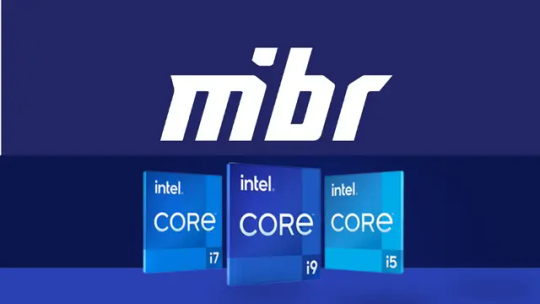
View On WordPress
0 notes
Link
Os preços das placas gráficas Arc A770 e Arc A750 da Intel continuam caindo e se tornando mais competitivos em relação às GPUs NVIDIA e AMD recentes. As placas gráficas Intel Arc A770 e Arc A750 oferecem valor competitivo contra as GPUs mais recentes da NVIDIA e AMD Começando com o principal destaque deste post, temos o GUNNIR Intel Arc A770 Photon OC White que vem com um frame buffer de 16 GB e é um dos poucos a apresentar tais capacidades de memória uma vez que a referência da Intel Limited Edition foi descontinuada. Isso deixa unicamente duas opções de A770 16 GB, 1 da GUNNIR e outra da ACER. A Sparkle nos disse que eles também oferecerão uma versão de 16 GB do Arc A770 quando sua novidade risco for lançada nas prateleiras do varejo. O preço mais grave do Intel Arc A770 16 GB foi anteriormente de US$ 339, mas a GUNNIR está oferecendo ainda mais descontos com o MSRP chinês para o cartão agora caindo para unicamente 2.299 RMB ou US$ 318. O mesmo cartão foi lançado por 3.199 RMB no ano pretérito, o que significa que estamos vendo uma queda de -28%, o que é muito grande. Isso mais uma vez torna a A770 16 GB a placa gráfica de 16 GB mais alcançável do mercado. Mas isso não é tudo, a placa de vídeo Intel Arc A770 de 8 GB também recebe uma boa promoção com a versão ASRock Phantom Gaming agora com preço de US$ 289, que é mais barata que a GPU NVIDIA GeForce RTX 4060. O Arc A770 tem sido muito competitivo com o RTX 4060 em nossa estudo recente e essas novas quedas de preço simplesmente o tornam um grande valor para os jogadores convencionais. O Arc A750 da ASRock na versão Challenger também recebeu um preço promocional reduzido para US$ 229, o que o torna mais barato que o Radeon RX 7600. Na China, você pode até encontrar a placa de vídeo GUNNIR Arc A770 Photon FLUX 8 GB por unicamente US$ 270, que é o mesmo preço sugerido da GPU AMD Radeon RX 7600. O AMD Radeon RX 7600 teve uma queda de preço para US$ 249, mas você terá uma economia de US$ 20 se comprar o Arc A750 de 8 GB, que terá um desempenho muito semelhante. A Intel realmente conseguiu fazer uma reviravolta completa com sua risco Arc, com o A770 e o A750 agora vistos uma vez que de grande valor, devido às recentes otimizações de driver e cortes de preços. Embora ainda existam alguns problemas com as placas no lado do driver, esperamos que a Intel os resolva rapidamente para que o Battlemage e as próximas iGPUs Xe-LPG para Meteor Lake possam ter um ecossistema de driver mais maduro em seu lançamento. Compartilhe esta história Facebook Twitter
0 notes
Text
Выходит Intel Arc A580 Intel выпустила первые видеокарты серии Arc A уже более года назад. На момент анонса Intel планировала выпуск пяти карт: A770, A750, A580, ... #IntelArcA580 #Видеокарта https://daboom.ru/vyhodit-intel-arc-a580/?feed_id=18625&_unique_id=651e714bceea3
0 notes